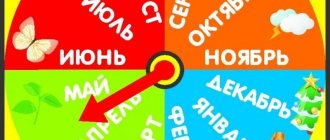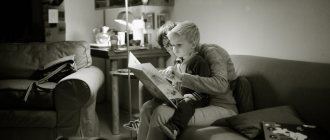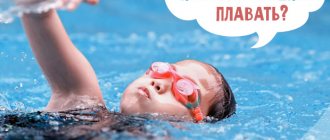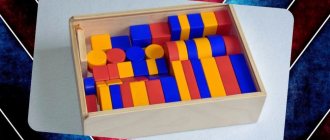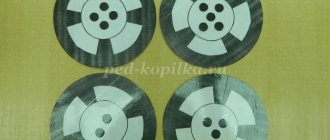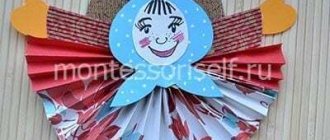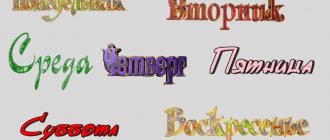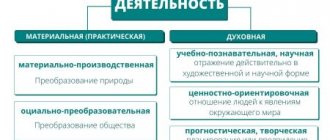How to teach children to identify the properties and characteristics of objects?
Khudyakova Elena Vyacheslavovna teacher MBOU "Aganskaya OSSH" preschool groups. Agan, Nizhnevartovsk district
The material was sent for publication in the All-Russian printed collection of practice-oriented materials “Preschool and primary education - modern methods and technologies of teaching and upbringing” - OCTOBER 2022.
HOW TO TEACH CHILDREN TO IDENTIFY THE PROPERTIES AND SIGNS OF OBJECTS?
- Abstract: The article discusses the following questions: how to gradually teach children to identify the properties and characteristics of objects.
- Key words: attribute of an object, property of an object
- Thematic heading: preschool education.
What is an item?
Advertising message
An object is all kinds of things around us, living beings, animals, plants, natural phenomena.
Each object has characteristics that distinguish it from another object.
Objects differ in color, shape, size, purpose, material from which they are made and other characteristics.
To determine the attribute of an object, you can ask the following questions:
- - Which?
- - which?
- -which?
- - which?
A sign is the presence or absence of a property in an object, as well as the presence or absence of a relationship between objects.
The attribute of an object is the way in which objects are similar to each other or how they differ from each other.
In everyday life, we teach our children to determine the properties of objects all the time, without noticing it. We ask, discuss and talk with the child (what color the object is, what shape it is, etc.).
So, let's try to highlight the essential features using the example of a lemon. Show your child this object (picture). Ask him to describe it, asking him questions; if the child finds it difficult, help him. What colour is he? “What shape?”, “What does it taste like?”, “What does it feel like?” Lemon: yellow, oval, sour, hard.
We teach children to identify the characteristics of an object by shape
Ask your child what shapes objects come in? (oval, round, square, rectangular).
You can offer your child, name and show objects of round, oval, square and rectangular shape. Or ask what figure the object resembles.
We teach children to identify the characteristics of an object by color
You can offer the child, name and show objects of red, yellow, green, etc. colors.
Ask your child what is green and what is blue? etc.
Thus, teaching a child to identify essential features by comparison should be done in stages:
- stage: Identify features or properties of one object.
- stage: Identify signs or properties of two objects
- stage: Identify signs or properties of three or more signs.
There are a lot of games and exercises for developing techniques for identifying features of an object. Let's look at a few of these games.
- Game "Guess who it is?"
Goal: development of an active vocabulary of adjectives denoting color, size, and qualitative characteristics of animals.
Progress of the game: an adult names several words (it is advisable to use mostly adjectives) describing this or that animal. The child’s task is to guess who they are talking about as quickly as possible.
More general descriptions should be given first. Then name more precise signs that are characteristic only of the hidden creature.
For example:
- Gray, angry, toothy, hungry. (wolf)
- Small, gray, cowardly, long-eared. (hare)
- Small, short-legged, hardworking, prickly. (hedgehog)
- Game "What is round?"
Here, of course, everyone knows what things are like here.
Purpose: To clarify children’s ideas about the size of objects; learn to classify objects according to a certain criterion (size, color, shape); develop quick thinking.
Progress of the game. Tossing the ball to children in various ways, the teacher asks a question to which the child, having caught the ball, must answer and then return the ball to the teacher. The teacher, in turn, passes the ball to the next child, waiting for an answer from him.
- What is round? (Ball, ball, wheel, sun, moon, apple, cherry...)
- What is long? (Road, river, rope, thread, tape, cord...)
- What is high? (Mountain, tree, man, hundred, house, closet...)
- What is green? (Grass, trees, bushes, grasshoppers, dress...)
- What happens when it's cold? (Water, snow, ice, dew, frost stone, night...)
- What is smooth? (Glass, mirror, stone, apple...)
- What's sweet? (Sugar, sweets, pies, cakes, waffles...)
- What is wool? (Dress, sweater, mittens, gloves, hat...)
- What is prickly? (Hedgehog, rose, cactus, needles, spruce wire...)
- What is spicy? (Knife, awl, glass, scissors, dagger, blade...)
- What's easy? (Fluff, feather, cotton wool, snowflake).
- What is deep? (Ditch, ditch, ravine, well, river, stream...)
3. Game “What dish is this?”
Goal: formation of relative adjectives in children’s speech.
- What soup made from... (beans, peas, fish, chicken, beets, mushrooms, vegetables)?
- What porridge is made from... (millet, rolled oats, semolina, buckwheat...)?
- What kind of jam is made from... (apples, plums, apricots, raspberries...)?
- What juice from... (carrots, pears, oranges...)?
- What kind of dishes are... (glass, metal, ceramic, porcelain, clay, plastic)? Give examples. Why is it called that? (glass - made of glass.)
- 4. Game “Name which one...”
Goal: formation of relative adjectives in children’s speech.
- The cabinet is made of wood, which means it is wooden.
- The bed is made of iron,…
- The sofa is made of leather,…
- The chair is made of plastic,…
Game "Say Otherwise"
Goal: expanding the dictionary of antonyms.
- Not sad children - ... (cheerful.)
- Not cold water - ... (warm.)
- Not a long rain - ... (short.)
- Not a dark sky - ... (light.)
- Not a rainy sky - ... (sunny.)
- Not bitter raspberries - ... (sweet.)
- Not low grass - ... (high.)
5. Game “Pick a sign”
Goal: agreement of adjectives with nouns.
- Doll (what?) - ..., ball (what?) - ...;
- Snow (what?) - ..., frost (what?) - ..., Icicle (what?) - ..., winter (what?);
- Summer (what?) – warm, bright, colorful, hot.
- The sun (what?) is yellow, hot, bright, warm.
- The grass in summer (what?) is green, fragrant, tall, short, soft.
- The water in summer (what?) is warm, cool, pleasant, refreshing.
- Rain in summer (what kind?) – warm, long-awaited, torrential, short, lingering.
- Children in the summer (what?) are cheerful, joyful, funny, tanned.
- The sky in summer (what?) is blue, bright, light, cloudless, stormy.
You can see the table of authors and learn more about the collections HERE
Item properties
Summary of direct educational activities on the formation of elementary mathematical concepts in children of senior preschool age
Educational objectives
: consolidate children’s knowledge about geometric shapes, the ability to recognize and name them; to form children’s mathematical ideas about the properties of an object (color, shape, size), to teach them to identify one or more properties of objects and compare them with each other, to find general similarities and differences between a group of objects; develop the ability to understand and answer the question: “What is the shape/color/size?”; get acquainted with conventional signs.
Developmental tasks
: develop imaginative thinking, creative imagination, curiosity, ingenuity, attention; develop mental activity; develop and clarify children’s speech, the ability to express and justify their judgments, the ability to reason and draw conclusions.
Educational tasks
: cultivate the ability to work in a team, provide mutual assistance, thank for assistance provided; cultivate patience and respect for each other.
Materials and equipment
: interactive board with tasks, individual tablets according to the number of children, video film “Properties of an Object”, riddles, colored pencils, balls (different in size and color), “mini chests”, “wonderful bag”, handouts (trays with geometric shapes according to the number of children).
Progress of activity
Teacher
: Guys, stand in a circle. How many of us do you think are here today?
Children
: A lot of.
Teacher
: Right, but how do you find out exactly how many guys there are? What need to do?
Children
: We have to count.
Teacher
: Let’s count together, repeat after me (
The game “How many of us?” is being played
) One, two, three, four, five We start playing.
How many of us are there? - Let's count. ( Children count together with the teacher, pointing to each child
.)
Teacher
: Well done!
Everyone has been counted, now sit down on the chairs. ( The teacher draws the children’s attention to the pencils lying on the table
.) Guys, my funny pencil told an amazing story.
It turns out that all pencils can talk and even brag! ( The teacher picks up a red pencil and shows it to the children.
) This pencil, what color?
Children
: Red.
Teacher
: Right.
The red pencil told me: “I can be fire, poppy and even a flag.” ( The teacher sketches the named objects on the board
.) What can the rest of the pencils boast of?
What does an orange pencil, for example, tell you about yourself? ( Children, if desired, go to the board, tell a story and make a sketch. Similar work is done with blue, green and yellow pencils
.) The cheerful pencils whispered one word in my ear, guess what?
( The teacher pronounces the text of the riddle
.)
Through the fields, through the meadows, an elegant arc rose. ( This is a rainbow.
)
Who knows what colors a rainbow is made of? Name it. ( If desired, one child completes the task “Make a Rainbow” on the interactive board. The rest of the children use “Mini Caskets” to make a rainbow from colored squares
.)
Teacher
: Well done, you all turned out a beautiful multi-colored rainbow. Guys, look what's on my table? (The teacher shows the children the balls.)
Children
: Balls.
Teacher
: Guys, what do you think they have in common?
Children
: They are called by the same word “ball” and have the same shape.
Teacher
: What are the balls' shape?
Children
: Round.
Teacher
: Well done! How do they differ from each other?
Children
: Balls vary in size and color. They can be small or large. Balls are made from different materials. There are soccer balls, volleyballs, tennis balls. And sometimes it’s just a toy ball.
Teacher
: Right.
We can conclude that each item has its own properties: color, shape, size, and the material from which they are made. Guys, now let's watch the video of the movie “Properties of an Object.” ( After watching the film, children complete the task on the interactive board “Find the Common Thing
.”)
Teacher
: Guys, look, there are different objects on my table.
Let's take them for a ride along the magic path. ( The game “Magic Path of Analyzers” is played. Children try to notice and name as many properties of each object as possible. For example: a ball - red, round, rubber, and so on
.)
Teacher
: It's time to go visit. And to whom, you will find out if you guess the riddles: I tried to draw it, But, I see, I tried in vain, After all, without a compass, friends, You can’t draw it. What is this?
Children
: It's a circle.
Teacher
: Well done! Listen to the second riddle: Three peaks, Three corners, Three sides - Who am I?
Children
: This is a triangle.
Teacher
: Right. But I have another riddle: He has known me for a long time, Every angle in him is straight, All four sides are the same length.
Children
: It's a square.
Teacher
: Great! And the last riddle: We stretched the square and presented it to the eye, Who did it look like or something very similar? Can you guess what figure this is?
Children
: This is a rectangle.
Teacher
: Well done, you guessed everything!
Let's go to the "Kingdom of Geometric Shapes". I have a beautiful bag with geometric shapes in it. Let's play. ( The game “Magic Bag” is played. Each child draws a geometric figure from the bag, names it, gives a brief description.
)
Guys, now find objects in your office that are similar to these figures, name them. What are they? ( For example, this is a table. The table is like a square. It is square.
)
Teacher
: Guys, sit down on the chairs. Look what's on your tables?
Children
: Geometric figures.
Teacher
: Let's play.
And the game is called “Collect the beads.” ( Children need to lay out the figures one after another so that each subsequent figure differs from the previous one in one way
.) You have made beautiful beads!
Guys, you are great! We have an interesting game. Did you like it? ( Children in a circle speak in one sentence, choosing the beginning of a phrase from the reflective screen: today I learned..., it was interesting..., it was difficult..., I completed tasks..., I realized that..., now I can..., I learned..., from me it turned out..., I was surprised...
)
Irina Babkina, teacher,
MB preschool educational institution “TsRR D/s No. 99”, Chita, Trans-Baikal Territory
Summary of GCD on FEMP for children of the older group. Item properties
Summary of a lesson for children of senior preschool age “Properties of objects”
Brief description: summary of a lesson on the formation of elementary mathematical concepts using sand therapy. Purpose of the material: the notes can be used by educators, teachers, defectologists and parents. Topic: “Properties of objects” Purpose: To form ideas about the signs of similarity and difference between objects. Objectives: - to form ideas about the properties of objects (color, shape, size); - develop observation skills and cognitive interest; — develop independent work skills; — continue to form spatial-temporal representations (left, right, above, below); - consolidate the ability to combine objects into groups (based on similar characteristics). Types of children's activities : cognition, communication, physical development. Planned results : children combine objects into groups based on similar characteristics.
Materials and equipment for organizing joint activities: sandbox (light table), a set of cards with images of various numbers of objects, cards with numbers, geometric shapes, pictures with objects, bunny, Dienesh blocks. Contents of children's organizational activities
.
Organizing time. Defectologist: Today a fairy-tale hero will come to visit us. But what kind of hero you will now recognize. In front of you is a piece of paper, and on it, dots with numbers. By connecting the dots with the numbers in order, you will find out who came to us. The bunny has prepared tasks for you. Main part. Defectologist: Once upon a time there were cheerful friends. And you will find out who they are if you guess the riddles (circle, square, rectangle, triangle). Defectologist: Game “Magic Bag”. Each child draws several geometric shapes from the bag and names them. - How are they similar and how are they different? (same shape, different color, same size). -What property distinguishes them from each other? (color). Defectologist: Guys, now let’s find objects similar to these figures in the office. Defectologist: Now Bunny galloped onto our magic table and prepared the next task. Place shapes of the same color in the upper right corner, and shapes of the same shape in the lower left corner. Defectologist: Game “Settled in the Houses” (draw three houses in the sand). Guys, we will populate the houses according to three criteria (color, shape, size). Children populate the houses with figures and pictures based on characteristics. Physical education minute. Here is a big pyramid (reach up) And a cheerful ringing ball (jumping in place) A soft bear with club feet (steps in place, on the outside of the foot) Everyone lives in a big box (show a large square) But when I go to bed (hands under the cheek, close eyes) Everyone begins to play (depict any movement) Defectologist: Game “Find the error.” The children come to the table. There are cards with objects, and numbers next to them, but something is confused here. Check and correct errors. Take turns correcting errors, if any. Well done, you completed this task. Defectologist: Game “Get in order!” Children take one number at a time while the music is playing, the “numbers” walk, and on the command “Get in order!” children line up in order. The game is repeated 2 times. When the children have built a number line, the teacher asks questions; - name the neighbors of the number 3 (addressing the child whose number is 3). - name the neighbors of the number 5. - name the neighbors of the number 6. - I thought of a number, it is less than 5 by one unit, what number is it? - I thought of a number, it is greater than 6 by one, what number is it? Reflection. Guys, Bunny says that you are great, you completed all the tasks. He really enjoyed being with you. — What did you like and remember most about today’s lesson?
We recommend watching:
Summary of GCD for the development of mathematical concepts in the senior group of kindergarten GCD for mathematics in the senior group based on Perrault's fairy tale “Little Red Riding Hood” Summary of GCD for FEMP in the senior group Lesson in mathematics in the senior group. Abstract
Similar articles:
Summary of a mathematics lesson in the senior group of kindergarten. Geometric figures
Summary of a lesson on FEMP in the senior group of a preschool educational institution on the topic: Width of objects
Summary of a lesson on FEMP in the senior group of a preschool educational institution on the topic: Measuring length
Abstract of GCD in mathematics in kindergarten in the senior group on the topic “Ball, cube”
Abstract of GCD in mathematics in kindergarten in the senior group. Length, height, width of objects
MAGAZINE Preschooler.RF
Topic: “Properties of objects.” Program content. 1. Form ideas about the signs of similarity and difference between objects. 2. Combine objects into groups - (based on similar characteristics) and select from the group individual objects that differ in some characteristic. 3. Develop children's connected speech. 4. Teach children to give reasons for their statements. 5. Continue teaching children to solve riddles. 6. Develop the ability to anticipate danger. Materials for the lesson: Demonstration - a picture of a bunny; Lotto pictures depicting fruits, flowers, vegetables; model of a basket of masks-hats of bunnies (for all) and foxes (one). Handout - cubes: five red and one yellow; bags or boxes for cubes. Contents of GCD. Organizing time. Mathematical warm-up. 1. Counting forward and backward 1 – 5. 2. Consolidating knowledge of numbers 1 – 5. I. Identifying signs of similarities and differences between objects. 1. Game: “Let’s Harvest.” —Who knows what time of year it is? (Autumn.) - What work is done in the garden and vegetable garden in the fall? (Vegetables and fruits are harvested in autumn). On the flannelgraph there is a model of a basket and pictures depicting flowers, fruits, and vegetables; picture with the image of a Bunny. — Our Bunny also decided to harvest from his garden. What did he put in his basket? Children, if desired, go to the flannelgraph and put pictures of vegetables in the basket. As the action progresses, you can ask questions: “What color are carrots? What shape is a cucumber? What size are radishes? What grows on earth? What grows underground? What grows above the ground? - Why didn’t you put chamomile? It can also grow in the garden, right? (Chamomile is a flower, and Bunny was collecting vegetables.). - Why is there an apple left? (An apple is a fruit, not a vegetable.) - What objects did you choose and on what basis? Because they're juicy? Large? Delicious? Are they used for food? (No. All these are vegetables, they grow in the garden.) 2) Game: “Magic bag”. On the tables the children have five red and one yellow cubes, and each a “magic bag” (a bag or box for the cubes). - What's on your tables? (Cubes.) - How are they similar and how are they different? (Same shape, size, all plastic. Different in color.) - What property distinguishes them from each other? (Color.) - Place cubes with the same properties in your “magic bag”. What cubes did you put in? What cubes are left? Why? (We put 5 red cubes - they have the same color, shape, size, material. There is a yellow cube left - it does not match the color). II. Physical education Stop, little bunny, don’t run along the narrow path. You’d better take care of your short little tail. The fox sneaks along the path. It’s unlikely he’s looking for mushrooms! One child depicts a sneaking fox, and the rest - running bunnies. The bunnies freeze, and then run away from the fox to their “house” places. III. Combining objects into groups according to a common property and separating from the group individual objects that differ in some property. - Guys, you have learned to find signs of similarity and difference among different objects. Let’s continue our journey with our Bunny: “let’s go” to the forest. I’ll tell you a few riddles and I think you’ll immediately guess what they’re about. Under the bushes, under the leaves We hid in the grass. Look for us in the forest yourself. We will not shout to you: “Ay!” (Mushrooms, berries.) - Name the berries shown in the first picture. (Raspberry, rowan, strawberry.) - What other berries do you know? Which of them grow in the forest, in the garden? Which ones grow only in the forest? (Blueberries, lingonberries, blueberries, cloudberries, etc.) - Who will be born wearing a hat? (Mushrooms.) - Name the mushrooms drawn in the picture. (White, honey mushrooms, fly agaric) - What do they have in common? (Each mushroom has a hat and a leg. They all grow in the forest.) - Which mushroom is the odd one out here and why? (Honey mushrooms always grow together, but fly agaric and white mushroom can grow alone; fly agaric is a poisonous mushroom, inedible, and the rest are edible). - Yes, indeed, there is even a poem about the fly agaric: It stands on the path On a thin leg, Covered with a colorful cap, Inedible, poisonous. - How many of you know why fly agaric is useful and for whom? (Amanitas can be eaten by moose. In folk medicine, fly agaric is used as a medicine - to prepare a rub). VI. Summary of the lesson. — The little hare was very glad to meet you. He really liked the stories of Sasha, Tanya, etc. about what grows and who lives in the forest. He is also happy about your gifts. Did you enjoy the trip with the Bunny?| Next > |

